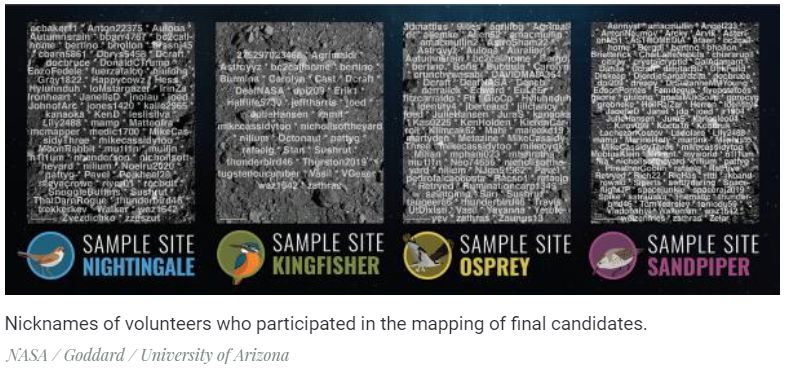The OSIRIS-REx interplanetary mission team summed up the preliminary results of the Bennu Mappers project, in which anyone could help astronomers choose a place to collect soil samples from asteroid Bennu. The project involved 3,640 people who identified more than fourteen million objects on the surface of the asteroid, and some of these people viewed more than a thousand The images, thus making a huge contribution to the final choice of the site of the ground sampling, according to the website of the Planetary Institute of the United States.
The main tasks of the OSIRIS-REx automatic interplanetary station are to take a soil sample from a near-Earth asteroid (101955) Bennu and study it from a low orbit. The procedure for obtaining the asteroid substance is scheduled for August 2020, and by September 2023 the station should deliver the capsule with it to Earth. During the procedure of selecting a place to pick up the ground from an asteroid from 16 candidates, scientists selected four sites that were named after different species of birds. In the future, all of them were thoroughly investigated, then it turned out that all the candidates had any flaws, because of which the selection process became very complicated. After discussions, it was decided to designate the main site of work as an area called Nightingale, which is located inside the 70-meter crater. The Scope area, which is the inner part of the 20-meter crater, was chosen as a reserve site.
To select the area of work at Bennu, a team of engineers and scientists launched the Bennu Mappers project in May this year based on the civil science platform CosmoQuest. As part of it, anyone who wanted could study the archive of detailed images of the surface of the asteroid and help to compile a complete catalog of all objects near the candidates for the sampling site noting the locations of small stones, boulders and craters. According to the current results, 3,640 people took part in the project and identified more than fourteen million objects on the global map of Bennu. Most of these people studied less than ten images, 68 volunteers processed between one hundred and five hundred images, and 23 people viewed more than five hundred images. Another seven people were able to explore about a thousand images each and made a huge contribution to the final choice of the place of the ground sampling. On average, it takes 45 minutes for a project visitor to process one image.

Scientists from the mission team did not stop Bennu Mappers after completing the selection of worksites, in the future they continue to draw up a complete scientific map of the surface of the asteroid. It is assumed that the project will be active for several months.